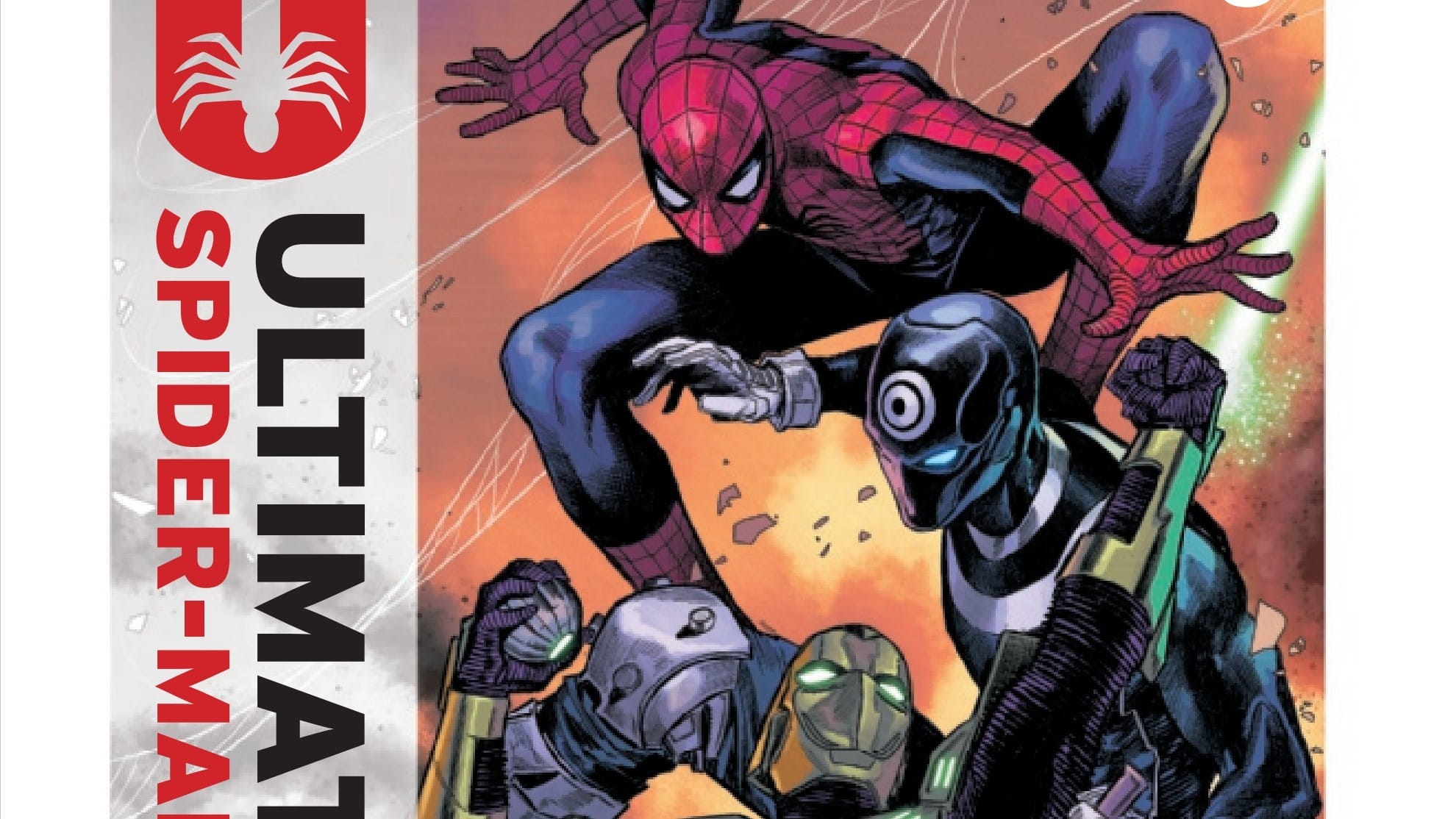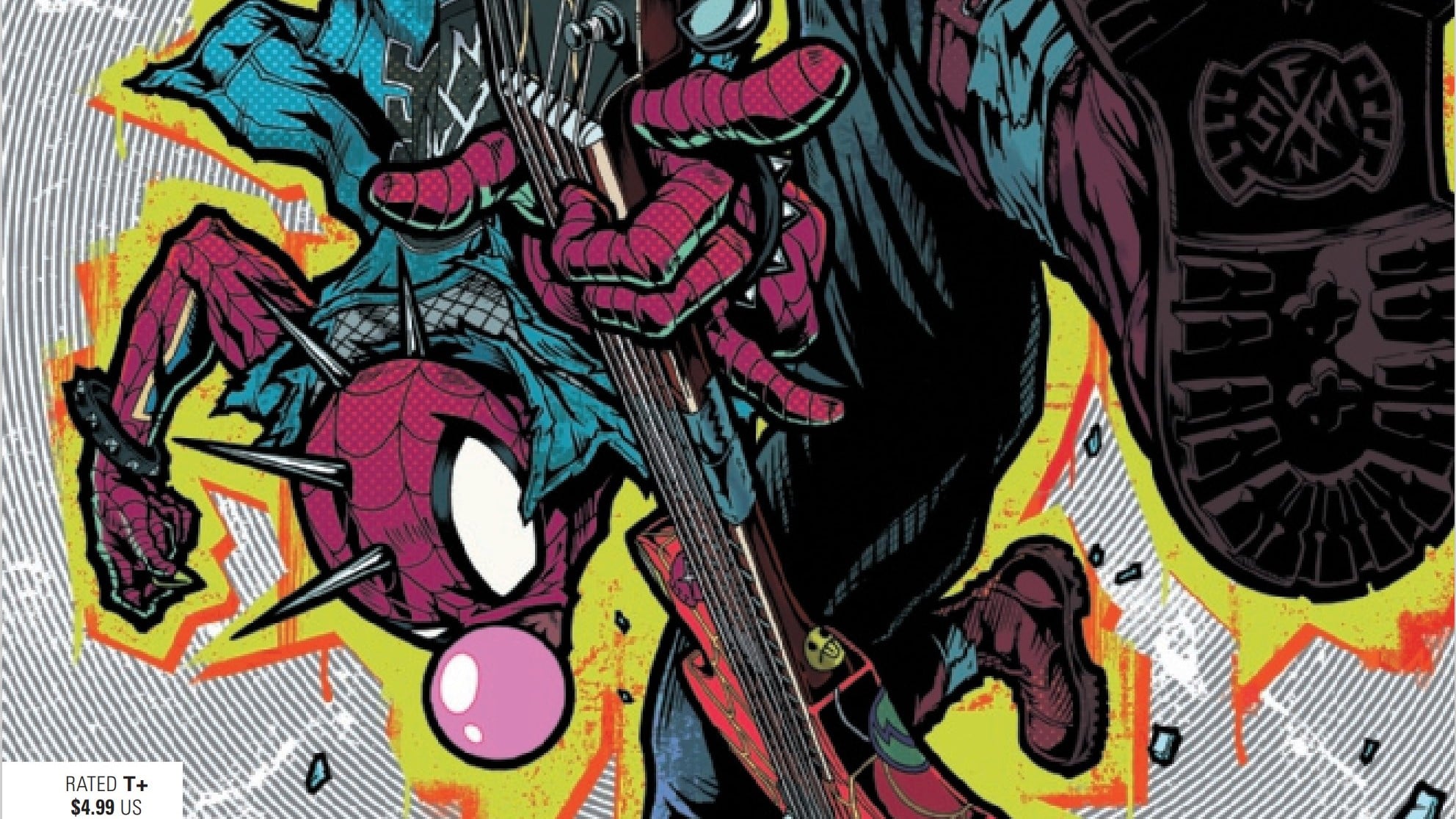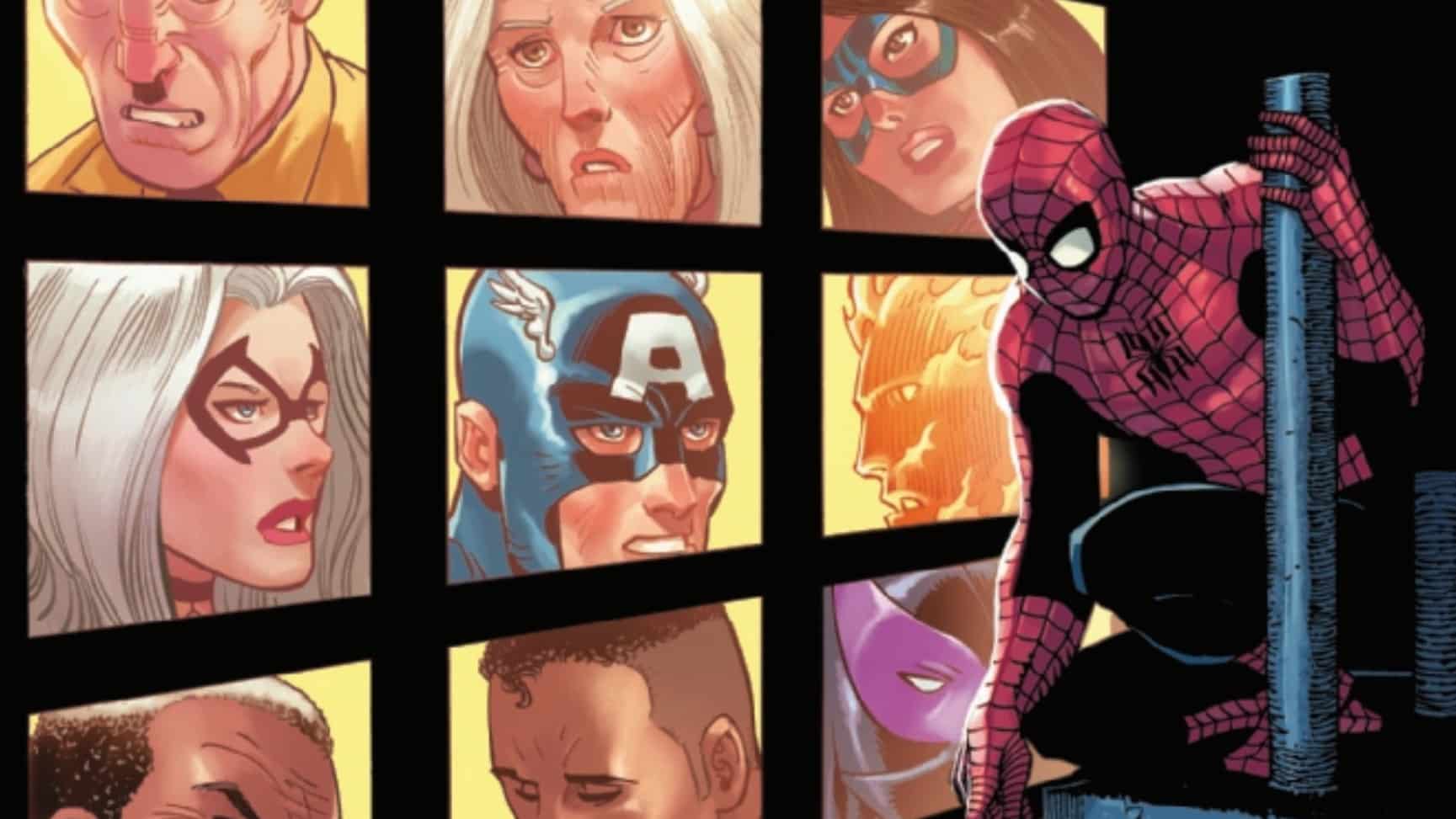Miles and Starling take on…an ice pharoah? It’s a new start for Miles and crew after his uncle’s heroic sacrifice in this tale written by Saladin Ahmed, art by Natacha Bustos, colors by David Curiel, and letters by Cory Petit.
Three thoughts on Miles Morales #22
One:
For years I drove down Jefferson Davis Parkway in my native New Orleans, often to visit friends and family at Xavier University, the HBCU most of my family are graduates of. For years, I never thought of “Jefferson Davis” as anything more than the name of a thoroughfare: any other meaning was, to me at least, at the time, totally detached from that limited purpose.
And then I learned who he was.
Luckily, my old stomping grounds gained a much more befitting name at the top of this year; apparently so did Miles’ father. For reasons I can only imagine (the penchant of naming Black characters “Jefferson”) yet I’m ashamed to note I never recognized, he shared his name with the erstwhile president of the Confederacy. Miles’ daddy rechristens himself “Jefferson Morales.” It’s a small, gender-norm defying gesture that mirrors other recent, small gestures around race. Though much appreciated and well overdue, changing his name doesn’t change the comic in any substantive way. Changing the name of a street doesn’t change the city in any substantive way.
Still, small steps forward are still steps forward. Here’s to hoping they’re not the only steps we take.
Two:
I’ve strongly appreciated the art of this inception of this iteration of Miles Morales. Very specifically, I appreciated Miles’ haircut: a well lined fade, complete with a razor edge and waves. I remember when Black hair was disdainfully treated as an afterthought: just look at the hilariously similar haircuts of early 90’s black characters. But this? This was an incredibly intricate and authentic presentation of Blackness. The art allowed me to connect and invest in the character with nary a word uttered. That’s an accomplishment in and of itself.
And now that accomplishment is gone, replaced by a generic bush. Different artists have different styles, and Natacha Bustos’ style, while objectively good, is maybe a bit too cartoonish for my personal tastes. But in a comic that too often teeters on generic, those details matter. His waves will be missed, but at least Starling’s braids are on point.
Three:
The story here is basic, even for a pre-teen aimed comic: question parents, find a villain, beat a villain, engage in a love triangle…err, square (Ganke dating Miles’ old flame, Miles kissing the granddaughter of a villain – what could possibly go wrong?), tie-in with the latest crossover crisis on the last page (symbiote dragons, because of course). All fine enough. Which is the entire problem with this run of Miles Morales: it settles for being fine enough. Good enough. Engaging enough. Not excellent like the Spiderverse. Not genre-defining like his video game. Simply sufficient.
The high point of this run was about a year or so ago, back in issue 8, when Miles was abducted by the mysterious “Assessor.” There were no easy wins or generic quips. Only exhaustion and fear. I *felt* invested in Miles’ struggle. I was genuinely curious as to what or whom captured him. I was given limited information in-comic, and thus given a wide berth to fill those blanks in with my own fears. It was a masterclass in writing for young audiences.
This issue is, unfortunately, not a masterclass. At best it’s a breezy 10 minute read; at worst it’s lazy, paint-by-numbers writing that abandons all pretense of emotional complexity hinted in the run’s earlier days.
Critics too often judge work by their personal passions and beliefs. And if that work doesn’t align with what they want – what they expect – then the work is deemed worthless. This, for an artist and for art as a whole, is limiting. Unfair. And as a critic (with a small c, to be sure) I work my damndest to ensure that I’m judging a work on its own merits, not my biases: on what the work sets out to do and what it achieves based on its own standards, not simply as personal fantasy fulfillment.
I’ve seen excellent writing from Mr. Ahmed. I’ve seen excellent art. I know the talent is there; I’ve seen it achieve this in issues past. That I haven’t seen it executed recently makes the reading experience all the more frustrating. It’s not simply because Miles doesn’t act up to my standards; it’s because Miles isn’t performing to the standards the comic set for itself.
But hope springs eternal. Names and monuments I once thought permanent are now gone with the wind (pun intended). A better world is possible. We just have to push.
So I’ll continue to read and hope and critique. That’s my part. That’s my push.
A proud New Orleanian living in the District of Columbia, Jude Jones is a professional thinker, amateur photographer, burgeoning runner and lover of Black culture, love and life. Magneto and Cyclops (and Killmonger) were right.
Find more of Jude’s writing here.






